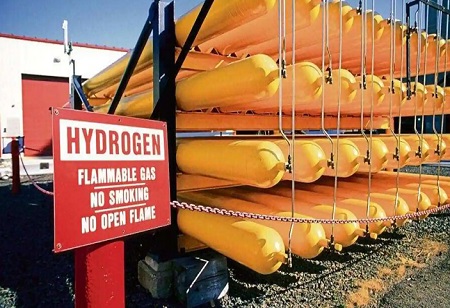Greenko Group and Belgium’s John Cockerill plan to set up a 2 gigawatt (GW) electrolyzer factory in India, one of the world's largest, through their joint venture. The factory will require an investment of $500 million, according to a person aware of the development.
This facility will be the world’ largest electrolyzer giga factory outside China, and has the potential to help replace around 8% of India’s annual liquified natural gas (LNG) imports. This assumes significance from the energy security perspective, given that India imports 85% of its oil and 55% of natural gas requirements. This also comes in the backdrop of global flash-points such as the ongoing Russia-Ukraine crisis that has added to the uncertainty in the international energy markets.
“The Gigafactory will include the full manufacturing electrolyser value chain including state of the art nickel coating and will produce electrolysers delivering H2 at 30 bars at the outlet at the highest purity level," the firms said in a joint statement on Monday.
Greenko Group’s JV with John Cockerill for electrolyzers is part of its green hydrogen and ammonia manufacturing plans. The Hyderabad-based Group also plans to set up a 1 million tonnes per annum ammonia manufacturing plant for exports.
“Greenko ZeroC (GZC), a subsidiary of Greenko Group, a leading Indian cleantech company, and John Cockerill, a world-leading designer and manufacturer of high-capacity alkaline electrolyzers in Belgium, signed an exclusive Framework Agreement to jointly manufacture green hydrogen electrolyzers in the Indian sub-continent," the joint statement said.
Green hydrogen is produced by splitting water into hydrogen and oxygen using an electrolyzer powered by renewable energy sources such as wind and solar. India’s total hydrogen demand is expected to touch 11.7 million metric tonnes
(mmt) by 2029-30 from the current 6.7 mmt. Around 54% or 3.6 mmt of India’s annual hydrogen consumption of 6.7 mmt is utilized in petroleum refining and the rest in fertilizer production. This is, however, ‘grey’ hydrogen produced from fossil fuels such as natural gas or naphtha.
Backed by GIC Holdings Pte Ltd, Abu Dhabi Investment Authority and Japan’s ORIX Corp., Greenko has India’s largest operational clean energy portfolio of 7.3 GW and is building 30 GWh of storage capacity as part of its plan to set up an energy storage cloud platform of 100 GWh.
“John Cockerill is, among other technologies, developing the world’s highest capacity electrolysers (6.5 MW commercial with envisioned engineering to go upto 20 GW) and manufacturing facilities across the globe," the statement said.
This comes at a time when India has notified its new ‘Green Hydrogen Policy’ that entails concessional green electricity, inter-state transmission charges waiver, land in renewable energy parks and manufacturing zones for promoting green hydrogen and green ammonia. Government would also mandate usage of green hydrogen and green ammonia under the upcoming policy in a phased manner. The government plans to implement the Green Hydrogen Consumption Obligation (GHCO) in fertilizer production and petroleum refining, similar to what was done with renewable purchase obligations (RPO) as reported by Mint earlier.
“This partnership will facilitate the production of the lowest cost green hydrogen by enabling delivery of electrolyzers at scale in India, within the next years. In turn, this will support the faster adoption of a green molecule-related ecosystem in the country," the statement said.
India plans to soon call bids for building 4 GW of electrolyzer capacity as part of its energy security strategy. The government has set up a 5 million tonne (mt) green hydrogen target by 2030 for the new age fuel.
“This partnership will not only help curtail India’s energy imports; it will also facilitate a turnaround to enable energy exports. And it will strengthen India’s green hydrogen ambitions as part of a wider renewable energy program that will see India run the world’s largest energy transition program," Greenko’s CEO and MD Anil Chalamalasetty said in the statement.
The other major features of India’s marquee ‘Green Hydrogen Policy’ include allowing banking of unconsumed renewable power with an electricity distribution company (discom) up to 30 days, and setting up bunkers near ports for storage of green ammonia for exports.
“India and neighbouring countries have abundant natural resources, a large domestic market and the potential to cater to the growth of this market regionally and globally,"John Cockerill Renewables’ CEO Raphael Tilot said in the statement.
India wants to encourage exports to Japan, South Korea, and Europe. Indian firms, including Reliance Industries Ltd, Adani Group and Acme Solar Holdings Ltd, have announced their green hydrogen plans.
